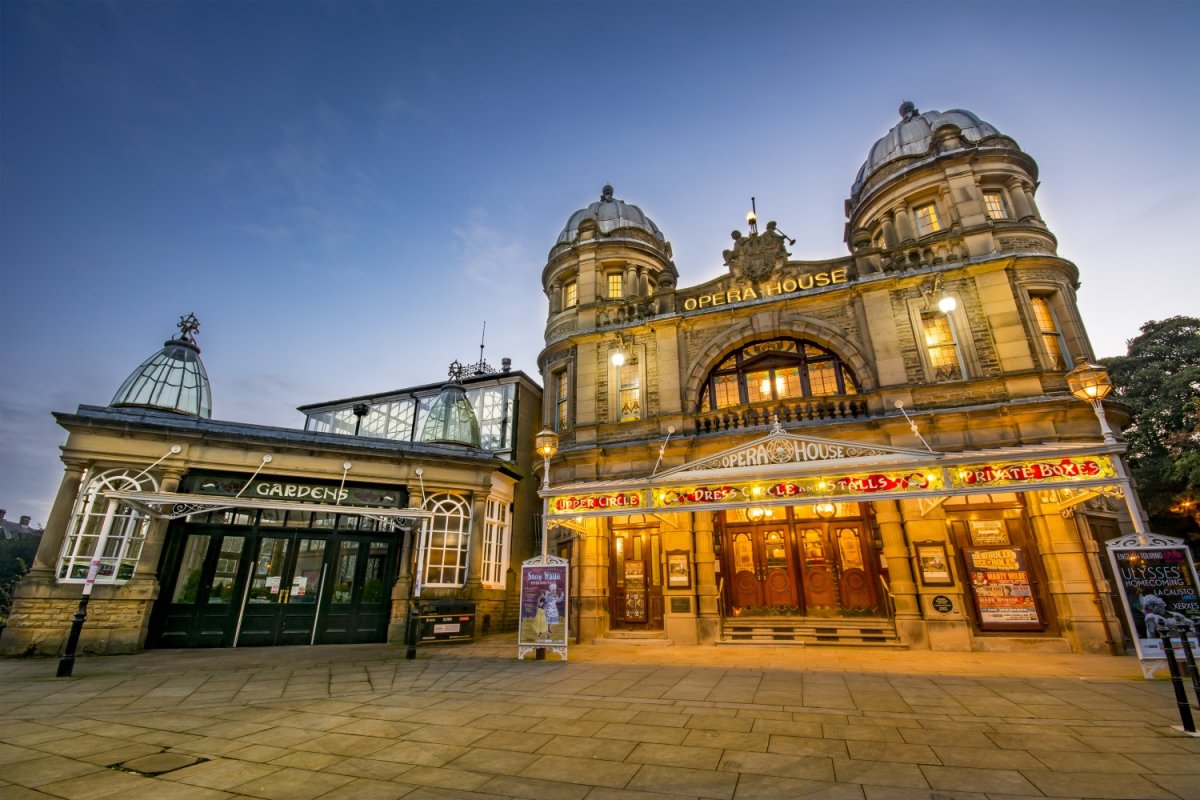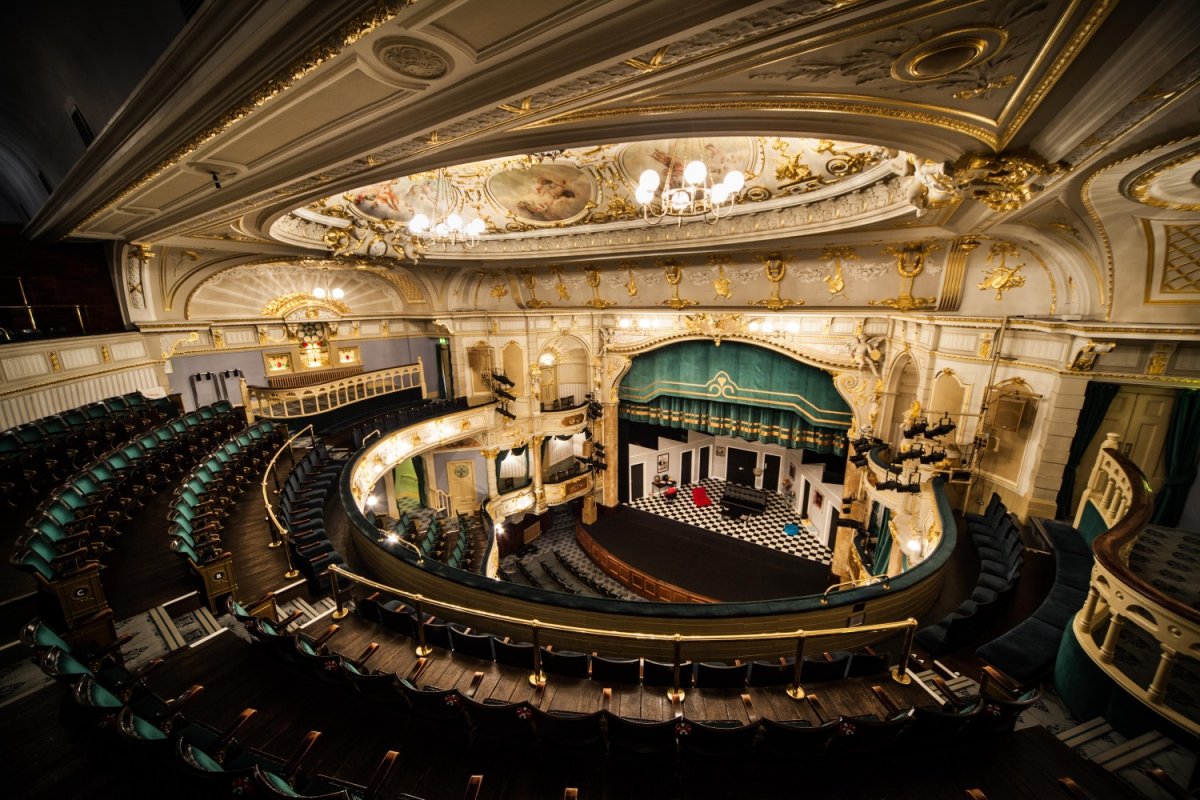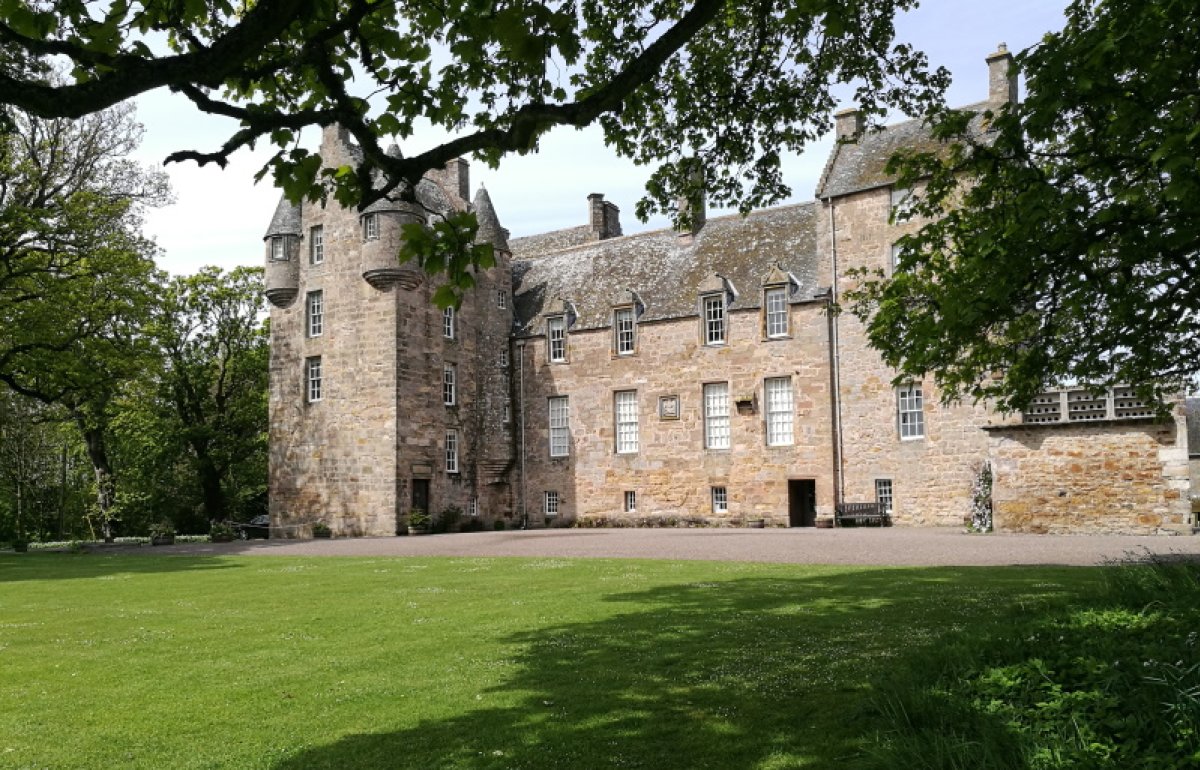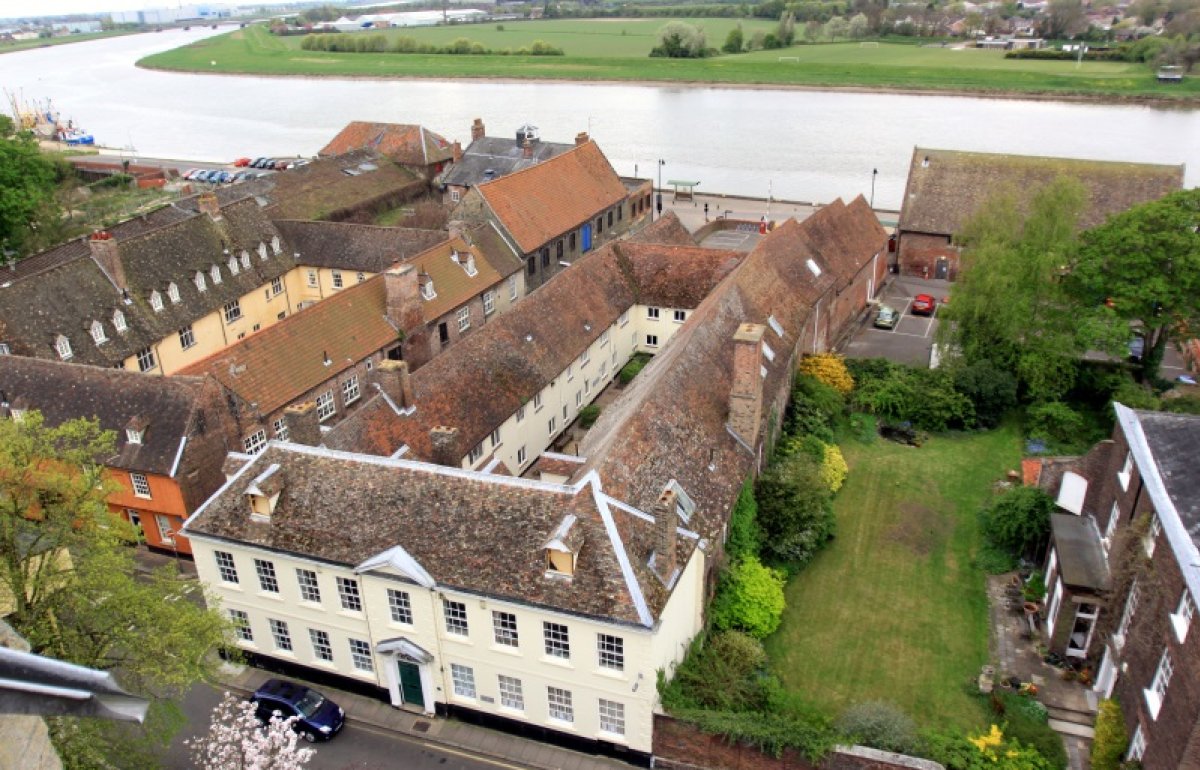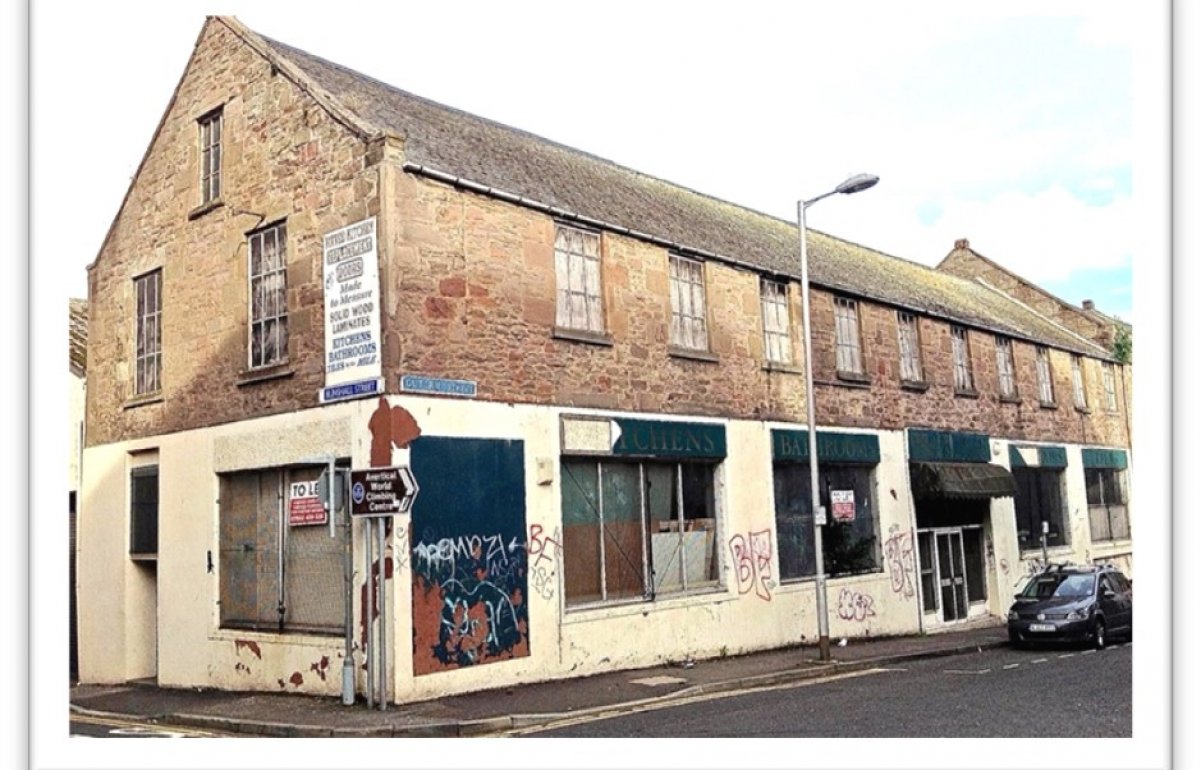Building in Focus: Buxton Opera House
Share on:
Described by Alan Bennett as ‘undoubtedly this country’s greatest theatrical architect’, Frank Matcham’s pleasure palace for the Peaks enchants Kate Griffin
I first set eyes on Buxton Opera House on a foggy November evening in 2018. I saw the illuminated twin domes floating in an eerie golden haze above the mist at the bottom of a hill.
Designed by celebrated theatre architect Frank Matcham, Buxton Opera House is an Edwardian jewel; a glittering ornament to high art and low entertainment. It opened in 1903 and over the years has played host to stars ranging from Anna Pavlova (Douglas Fairbanks Jnr. and Mary Pickford were in the stalls for her Dying Swan) to Ken Dodd, who repeatedly kept his audience locked within its gilded plaster interior long after the last trains had left for Manchester.
The building in lights at night. Credit: David J King
After the days of variety had pattered to a halt, it was converted to a cinema until it was repaired and reborn as a theatre in 1979.
During my stay, I was lucky to be given a special tour of the building. I marvelled at the opulent yet intimate interior where Matcham’s baroque swags, harp-plucking cherubs and hand-painted panels depicting classical scenes created a pleasure palace for the people of the Peaks.
Buxton is famous as a spa town and like the Paris Opera House, its counterpart in Buxton has its own water feature. A natural spring runs beneath the building behind the orchestra pit. Although the spring is controlled by electronic pumps, tide marks on the wall are the legacy of power cuts that have put the pumps temporarily out of action. My guide confided that some members of the orchestra had been known to play in their wellies as a precaution.
And like the Paris Opera House, I heard that Buxton had its very own phantom. Apparently, many members of staff have caught the unexplained aroma of cigar smoke outside one of the boxes. How tempting it is to speculate that this might be the shade of Frank Matcham himself, back to enjoy his beautiful creation. His biographer Brian Walker notes that he was "a man of remarkable vigour and had an enthusiasm for life ...” along with “a tranquility of mind and a great sense of humour and fun".
The sweeping interior. Credit: Luke Hodgkins
Between the years 1891 to 1912, Matcham designed theatres, music halls and also public buildings such as County Arcade in Leeds and Harrogate Royal Hall. From Rococo swirls, to Tudor strap work, and from heady Oriental and Anglo-Indian capriccios (The Grand Opera Belfast) to classical Renaissance splendour (The London Coliseum), Matcham’s buildings are all different, but, despite the exuberant ornamentation, their shared characteristic is a decent view from every seat – whether from the gods or a private box near the stage. His use of cantilevers for the galleries allowed him to discontinue the use of columns that could obstruct the audience’s view of the stage.
Frank Matcham was a democratic architect. In fact, his designs were a little too ‘democratic’ for some purists who sneered at what they perceived as vulgarity. In an essay in ‘Frank Matcham and Co’ (Biblio), Professor Andrew Saint points out (perhaps rather shockingly for SPAB sensitivities) that in a fast-paced commercial environment, Matcham had little time or sympathy for classical rules or the artisan refinement of William Morris’s arts and crafts movement. But that did not mean his work was not skilful and considered. In the 1970s, the threat to the Lyric Theatre, Hammersmith (a gorgeous Matcham auditorium) led to a reappraisal of his work as did the discovery of around 10,000 unseen drawings from his office providing evidence of the depth of his architectural expertise.
Kate Griffin was formerly SPAB’s communications manager. Her Kitty Peck series is published by Faber and Faber. A longer version of this article appeared in the autumn 2020 issue of the SPAB Magazine, a benefit of membership.
Sign up for our email newsletter
Get involved

